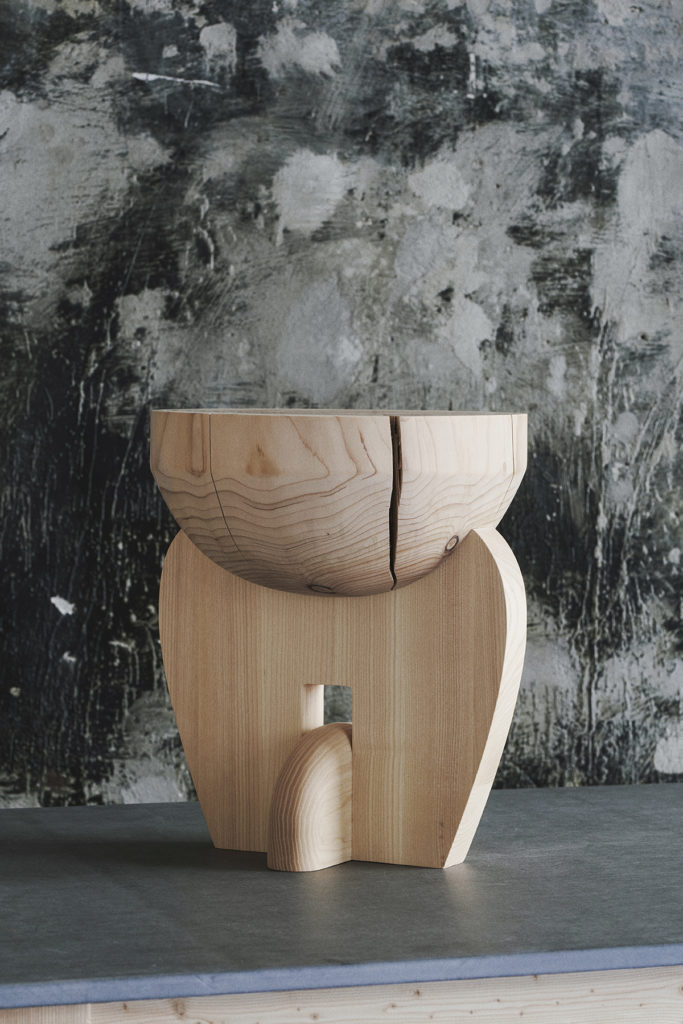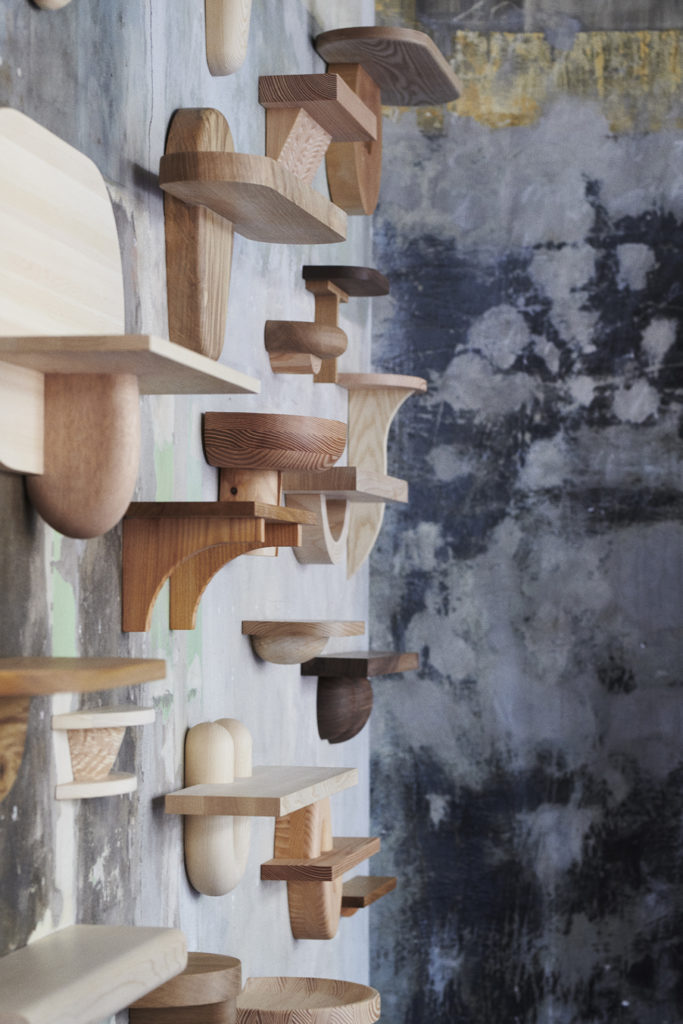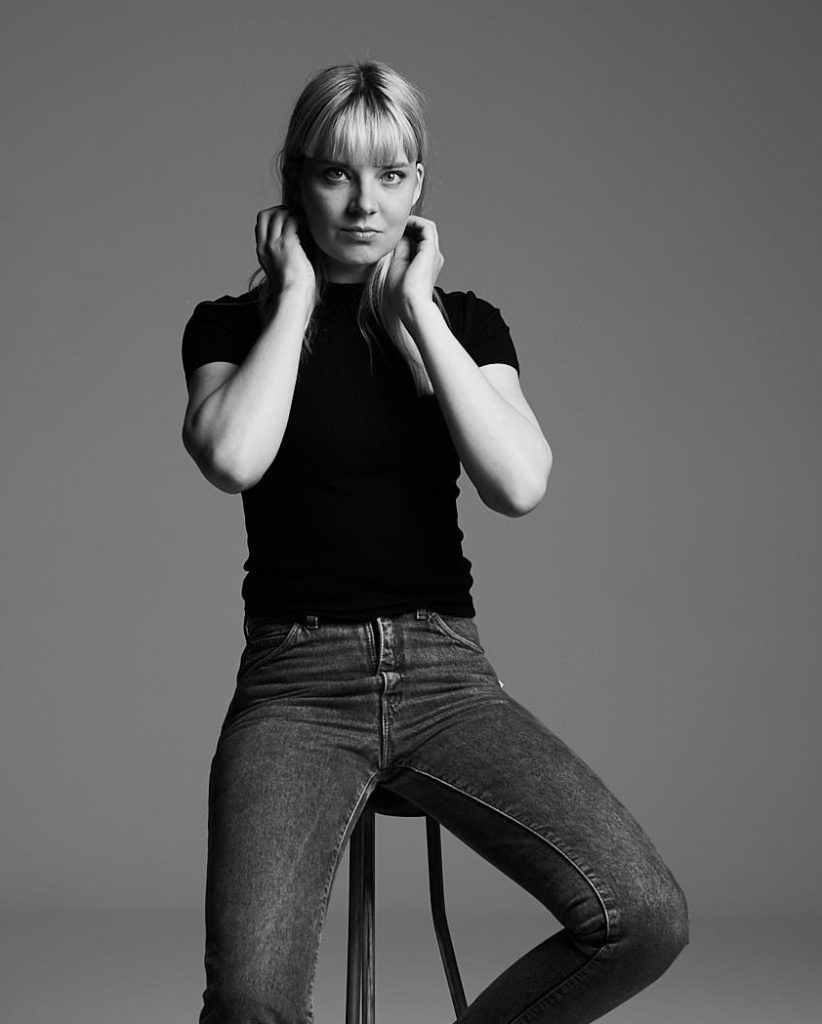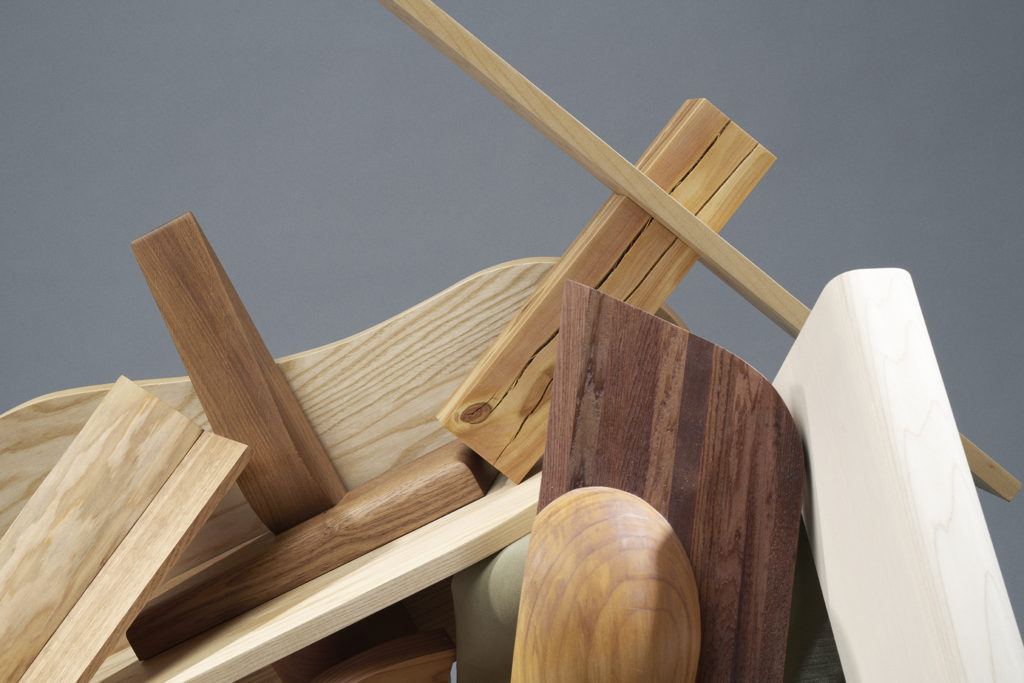They hang from floor to ceiling on the raw concrete walls. Round, oblong and figures of eight – lots of shelves, all in oiled wood. Designer, Anne Brandhøj shows me around the Copenhagen gallery, Tableau, where she’s exhibiting her 100 shelves and pedestals, over the winter months. They’re made out of leftover wood that was supposed to be thrown out or burnt, but instead have been piling up in the designer’s workshop and garden , over the years. Some of the wood has been given to her, while some of it she felled, herself.
”This is from my in-laws’ garden,” she says, lifting up a mushroom-shaped pedestal in beech. It’s as soft as butter. Even though the objects are presented in a gallery, where normally a ’look and
do not touch’ policy applies; Anne Brandhøj actually wants people to touch the wood.
”We need to have something between our fingers. Many of my friends are surprised about how they spend the whole day in front of a computer, and don’t even have to go down to the post office to post a letter. Sometimes they come out to my workshop just so they can saw something. The sensuous aspect is lacking in our everyday lives.”
Finding the truth in the sawmill
Anne Brandhøj found herself in a dilemma when she was about to graduate from the Royal Danish Academy of Architecture, Design and Conservation.
”I was almost finished studying to be a furniture designer, but couldn’t really defend wide-scale furniture production. There is so much furniture in the world! It was difficult for me to contribute to that overproduction and have to come up with new trends all the time,” she says.

The solution was the concept ‘aesthetic sustainability.’
“It describes objects that last a long, long time, and acquire more value when used, and are in durable materials. If you buy a new telephone, it will already lose value the very next day if it gets a scratch. But, a butter knife in wood becomes even more beautiful when it’s been in butter.”
She turned to woodwork during her graduation project, in 2017. And the fascination for furniture by Hans Wegner, and Arne Jacobsen was born. Their furniture is aesthetically sustainable, she points out. Even after so many decades, the pieces are still going strong. Both in terms of appearance and materials.
“Wood appealed to me because it is a durable material, it’s warm and vibrant and evolves with use. So I went out to a sawmill in the woods, with a lumberjack, and I wanted a huge tree stump that was dry so I could make furniture out of it. He said: “There’s something that you don’t understand at all.” First, the tree had to be cut down and then dried, and at the sawmill, and that would take a long time. Years. At school, I was used to just going up to the wood workshop and ordering what I needed. So, there were a lot of things that I new nothing about, and I was really the stupid blonde. I realised I didn’t want to be that again.”
Today, Anne Brandhøj can talk at length about a piece of wood, based on its age rings, about where the tree was placed in relation to the sun, wind, the area’s vegetation and so on. After she graduated, she went out to the forest with a forester, who helped her to expand her knowledge and among other things taught her how to fell a tree, herself.
Always feeling torn
Since then, things have really taken off for Anne Brandhøj, she has had an array of solo exhibitions and received a number of awards, among others the Finn Juhl prize, in 2019, which is awarded to “a recipient who has made a significant contribution within the field of furniture design.” Her designs flow between being art objects and furniture. And unlike much other woodwork, Anne Brandhøj lets the wood shape itself, on its own terms. Wood is normally cut into straight planks, where every flaw is excluded. With Anne Brandhøj, cracks, fungal spores, gnarls and resin pockets are welcome attributes to the final expression.
“A gnarl in the wood gives so much character. In the traditional furniture industry, they are cut off, because they only want wood that is uniform. I don’t think that one should throw away or burn wood just because of a little gnarl, or because you don’t plan to use the wood straight away. Maybe you will, later on. I know that I can’t store unimaginable amounts of wood…”
Because using every last bit is the most sustainable, says the designer. But, even if there’s zero waste, and the wood is local and not varnished; she still has her doubts.
“At the end of the day, it’s not sustainable to produce new products. I always feel torn about that. Because I’m also drawn to the new, I’m interested in new products and technology and all that. It’s a balancing act. But, I think that we are heading in the right direction, where people are more aware of what they throw away and how many pieces of Ikea furniture they buy. I really like that people have developed an allergy to cheaply produced furniture.”

How does she see the future of the industry?
“I hope that materials become more expensive. Right now, they are ridiculously cheap, because we think that our natural resources are endless. But, if this drinking bottle lid breaks, the material itself still has value, even though it can’t perform its original function any longer. I have a dream that materials will become more valuable – whether it’s through regulation, or whether it will be because the resources simply disappear from nature, we’ll have to see about that. I hope that we manage to stop before then.”
Anne Brandhøj (1984)
Works with aesthetic and environmental sustainability. Part of aesthetic sustainability is to create furniture with an aesthetic expression that is durable over time. For example, by appreciating materials. When used they will be more beautiful and thus achieve a higher aesthetic value. Anne creates furniture, designed to evolve over time, and create long-term relationships with the user.
Educated from The Royal Academy, 2017
2017 – nu: Teacher at The Royal Academ
2015 – nu: member of Holdbare design group
2013 – nu: member of Rundkant



